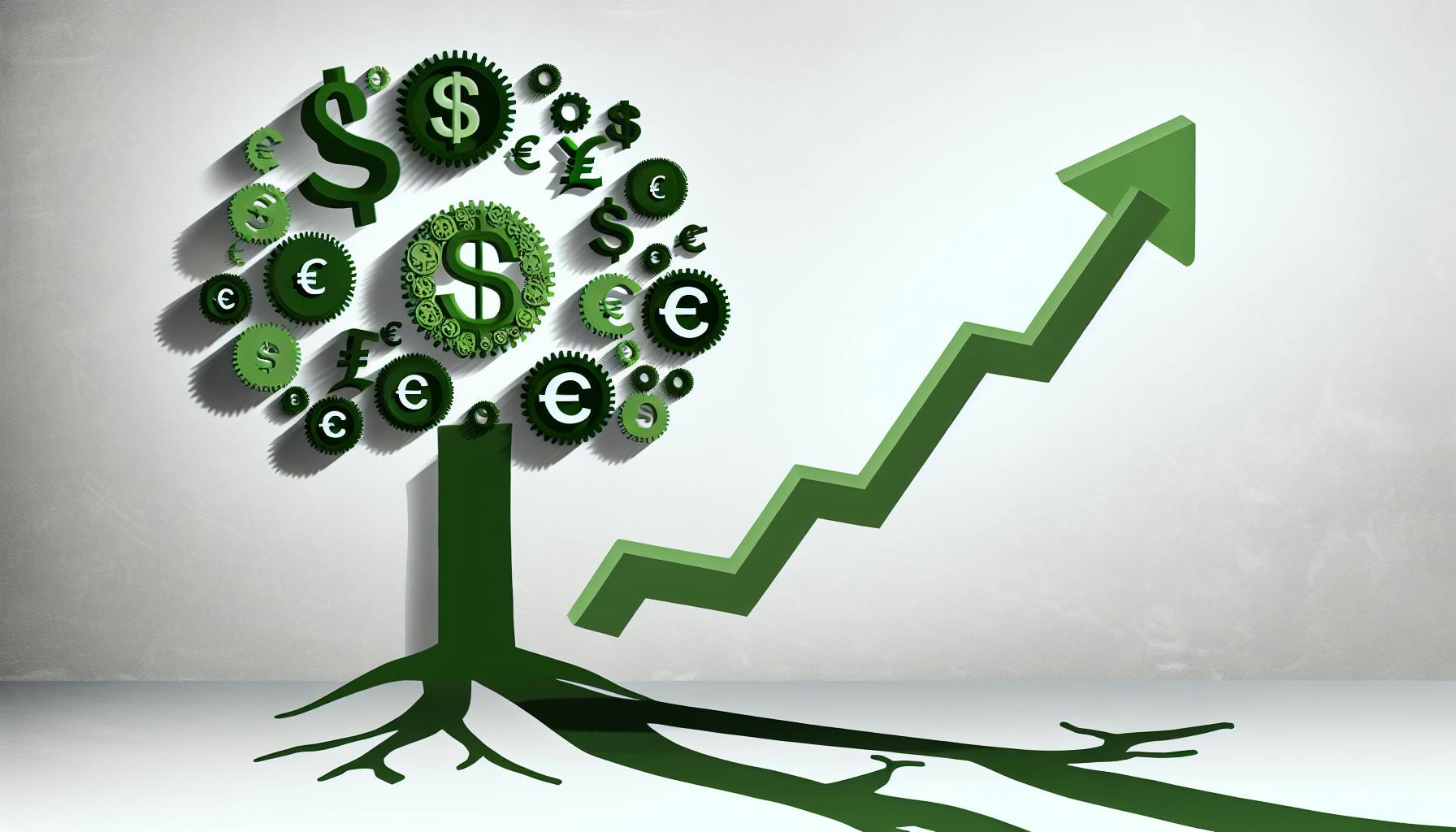Looking to understand ESG Reporting Solutions? Here's a quick guide to get you started:
- ESG Reporting involves sharing information about a company's impact on the environment, its social contributions, and governance practices.
- It's becoming crucial for attracting investors, complying with regulations, and meeting customer and employee expectations.
- Manual ESG reporting can be challenging due to scattered data and the potential for errors.
- ESG Reporting Solutions help by centralizing data collection, ensuring data quality, and enabling custom reporting and analytics.
- Implementing these solutions involves stakeholder analysis, prioritizing ESG metrics, and integrating with existing systems for ongoing success.
By embracing ESG reporting solutions, companies can improve transparency, efficiency, and ultimately, their impact on the world.
The Growing Importance of ESG
Lately, more people are paying attention to how companies perform on these ESG issues:
- Investors are using ESG factors to decide where to put their money, affecting how easily companies can get funding.
- Governments around the world are requiring companies to share more about their ESG efforts, especially about the risks of climate change.
- Customers and workers are looking at a company's ESG efforts when deciding to buy from them or work for them.
Doing well in ESG can lead to lower risks, more profit, and a better reputation.
Challenges With Manual ESG Reporting
But, trying to gather and organize ESG information without a central system can be tough:
- Information is scattered in different places and formats, making it hard to put together a clear report.
- Using spreadsheets and doing things by hand can lead to mistakes.
- It's hard to see how things have changed over time.
Good ESG reporting tools can help companies manage these issues and do a better job at being sustainable.
The Role of ESG Reporting Solutions
ESG reporting solutions are tools that help businesses gather, understand, share, and keep track of their impact on the environment, how they treat people, and how they run their company. With more people wanting companies to be open and responsible about these things, these tools are really helpful for showing a company's dedication to being sustainable.
Key Capabilities
- Centralized Data Collection and Management: These tools bring together ESG information from all over the company into one place. This makes it easier to handle and use the data.
- Data Quality Checks: They check and fix the data to make sure it's right and reliable.
- Custom Reporting and Disclosure: Companies can use these tools to create reports that fit different needs and rules.
- Benchmarking and Analytics: They offer ways to look at ESG efforts over time and compare them to other companies.
Top ESG Reporting Solutions
Here are a few ESG reporting tools to think about:
- Workiva: Good for making official reports and collecting ESG data.
- Diligent Entreprise ESG: Helps track a wide range of ESG topics and works well with other business tools.
- Greenstone+ ESG: Great for deep dives into carbon data and other ESG areas for reporting.
Using these specialized ESG tools, companies can better handle the growing need for clear information while also getting valuable insights from their sustainability efforts.
Implementing ESG Reporting Solutions
A step-by-step approach that focuses on the most important parts first makes it easier to start using ESG reporting software.
Best Practices For Implementation
When setting up an ESG reporting solution, it's important to do it right. Here's how to make it work:
- Conduct stakeholder analysis: Find out who inside and outside your company cares about ESG reporting. Understand what they need and keep them in the loop.
- Appoint a project lead: Pick someone to oversee the software setup. This person will be the go-to for any questions.
- Start with priority ESG metrics: Focus on a few key ESG areas first. This keeps things manageable and avoids overwhelming your team.
- Integrate with existing systems: Link the ESG software to systems you already use, like ERPs. This makes collecting data easier and cuts down on manual work.
- Validate data accuracy: Regularly check that your ESG data is correct through audits and tests. This ensures your reports are trustworthy.
- Enable self-service access: Let team members access ESG data whenever they need it through dashboards. This helps with quick reporting and decision-making.
Ongoing Success Factors
To keep getting value from your ESG reporting solution:
- Update processes and data flows: Always look for ways to get better at collecting, managing, and sharing ESG data.
- Expand metrics over time: Slowly add more ESG areas to your reports for a fuller picture as you get comfortable with the basics.
- Tweak software configurations: Adjust the software settings to fit your changing needs. This includes report layouts, what data you track, and who can see it.
- Keep stakeholders aligned on changes: Make sure everyone knows about any updates to ESG reports or how you handle data. Clear communication keeps everyone on the same page.
sbb-itb-0d204f9
Conclusion
Key Takeaways
- ESG reporting helps companies be more open, improves how they work, and draws in investors.
- Handling ESG data the old-school way is tough because it's complicated.
- ESG software makes it easier to keep track of data, create reports, and understand how well a company is doing.
ESG reporting solutions are tools that help businesses share important information about how they affect the environment, treat people, and run their operations. Nowadays, people like investors, customers, and government agencies want to know more about a company's environmental, social, and governance actions. Being clear and detailed about these things is really important.
But, dealing with ESG data can be a headache if you're trying to do it all manually. Information is all over the place and in different forms. Using spreadsheets and manual methods can lead to mistakes and make it hard to figure out what the data means. This can stop companies from really understanding and improving their ESG efforts.
This is where ESG software comes in handy. It helps gather all the ESG information in one spot, making sure the data is correct. It also lets companies create reports that fit what they need and helps them understand how they're doing over time. With the right ESG software, companies can follow the rules and also get ahead by using their sustainability efforts in a smart way.
As the world is quickly moving towards being more green and fair, companies that don't manage their ESG well might fall behind. But those that get on top of their ESG data now can build trust, attract investments that care about these things, and use their good practices to succeed in the long run. Now is the time to act - getting the right ESG reporting tools can help lead the way.
Related Questions
What are the key principles of ESG reporting?
The main goals of ESG reporting are to be open, responsible, and keep everyone informed. By focusing on what's really important, being accurate, and reliable, companies can make reports that build trust.
What are the key elements of ESG reporting?
The main parts of ESG reporting include:
- Environmental stuff like how much energy they use and their waste
- Social things such as how they treat workers and the local community
- Governance issues like how much the big bosses are paid and their business ethics
- Being open by sharing data
- Attracting investors by showing off good ESG work
What is the basis of ESG reporting?
ESG reporting is all about sharing info on how a company takes care of the environment, treats people well, and runs its business the right way. It helps make things clearer for investors and encourages other companies to do better.
How do I prepare for ESG reporting?
To get ready for ESG reporting, you can:
- Check how you're collecting and managing ESG data now
- See how you stack up against the best practices for reporting
- Use central systems to keep data in one place
- Talk to people who care about your ESG efforts
- Keep an eye on new ESG trends
- Aim for reports that really show the impact and are clear


